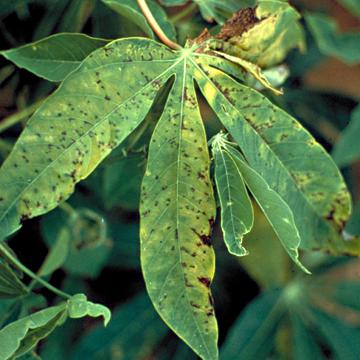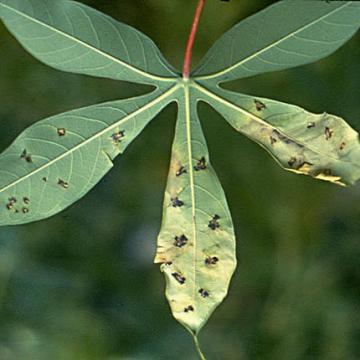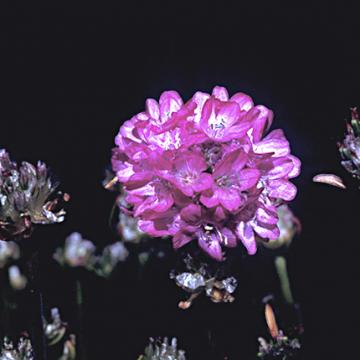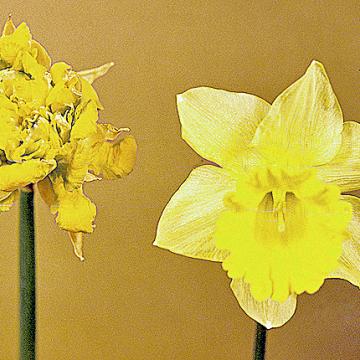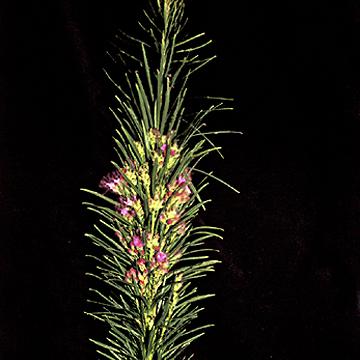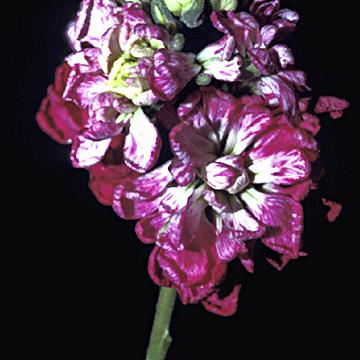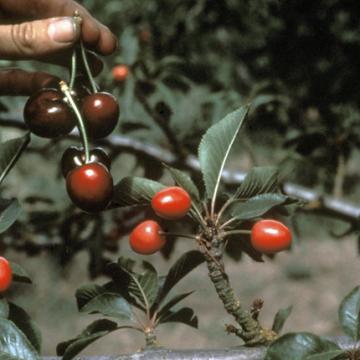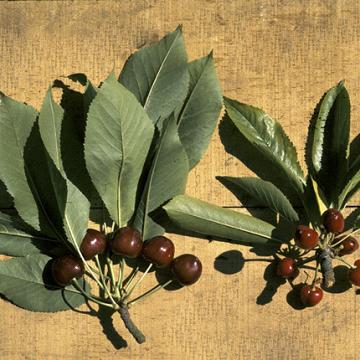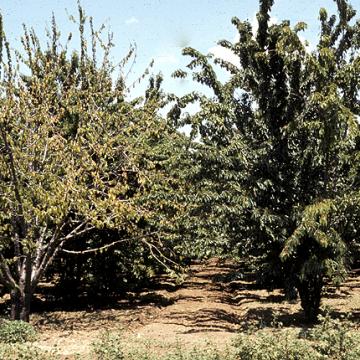DISEASE: Bacterial leaf spot (Bacterial necrosis)
HOST: Cassava
Cassava with yellowish leaves and water-soaked, angular spots. The disease is primarily on foliage, although the pathogen may invade stem buds and young branches.
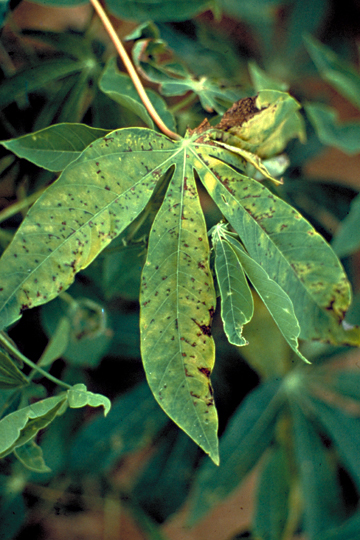
Bacterial leaf spot (Bacterial necrosis) | Cassava
DISEASE: Bacterial leaf spot (Bacterial necrosis)
HOST: Cassava (Manihot esculenta)
PATHOGEN: Xanthomonas cassavae
PATHOGEN SYNONYM: Xanthomonas campestris pv. cassavae
SOURCE: APS
DISEASE: Bacterial leaf spot (Bacterial necrosis)
HOST: Cassava
Cassava with brownish lesions and blackish edges. Leaves turn yellow with multiple infection sites.
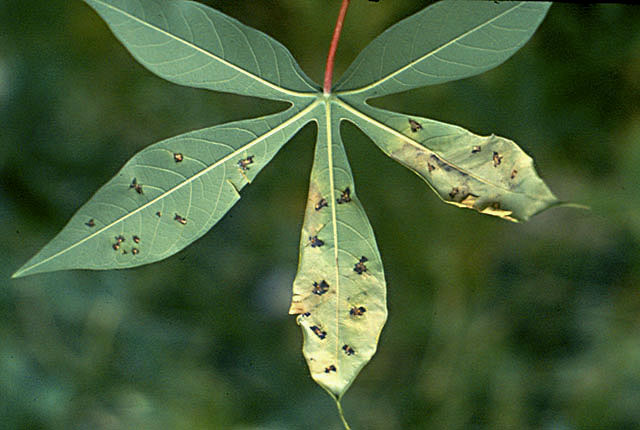
Bacterial leaf spot (Bacterial necrosis) | Cassava
DISEASE: Bacterial leaf spot (Bacterial necrosis)
HOST: Cassava (Manihot esculenta)
PATHOGEN: Xanthomonas cassavae
PATHOGEN SYNONYM: Xanthomonas campestris pv. cassavae
SOURCE: H. Maraite, A. Alvarez
DISEASE: Phytoplasma disease
HOST: Armeria
Phytoplasma-infected armeria (left and right) compared with healthy plant (center).
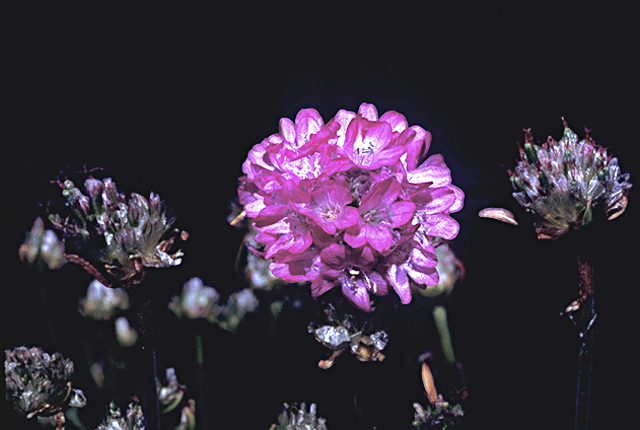
Phytoplasma disease | Armeria
DISEASE: Phytoplasma disease
HOST: Armeria (Armeria maritima)
PATHOGEN: 'Candidatus Phytoplasma' sp.
PATHOGEN SYNONYM: Phytoplasma (undefined)
SOURCE: R. Raabe
DISEASE: Phytoplasma disease
HOST: Daffodil
Phytoplasma disease of daffodil. Healthy (right).
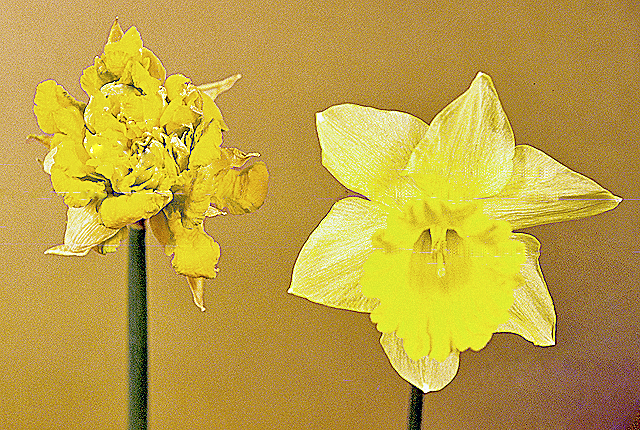
Phytoplasma disease | Daffodil
DISEASE: Phytoplasma disease
HOST: Daffodil (Narcissus pseudonarcissus)
PATHOGEN: 'Candidatus Phytoplasma' sp.
PATHOGEN SYNONYM: Phytoplasma (undefined)
SOURCE: R. Raabe
DISEASE: Phytoplasma disease
HOST: Gayfeather
Gayfeather with phyllody of flowers.
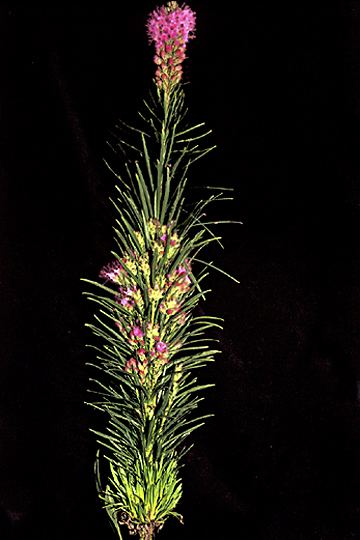
Phytoplasma disease | Gayfeather
DISEASE: Phytoplasma disease
HOST: Gayfeather (Liatris sp.)
PATHOGEN: 'Candidatus Phytoplasma asteris'
PATHOGEN SYNONYM: Phytoplasma Aster yellows group
SOURCE: R. Raabe
DISEASE: Phytoplasma disease
HOST: Stock
The disease causes malformation and arrested development of flowers.
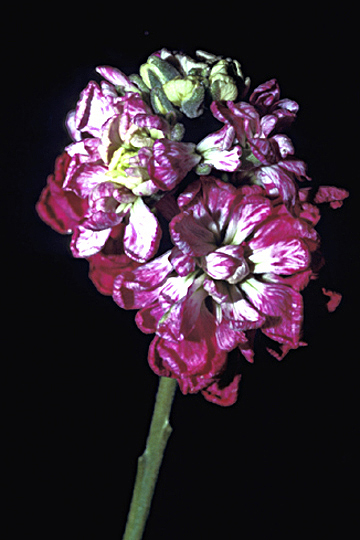
Phytoplasma disease | Stock
DISEASE: Phytoplasma disease
HOST: Stock (Matthiola incana)
PATHOGEN: 'Candidatus Phytoplasma' sp.
PATHOGEN SYNONYM: Phytoplasma (undefined)
SOURCE: R. Raabe
DISEASE: X-disease (Western X) or buckskin
HOST: Cherry
Comparison of normal, dark cherries (in hand) with infected, immature cherries with less pigmentation.
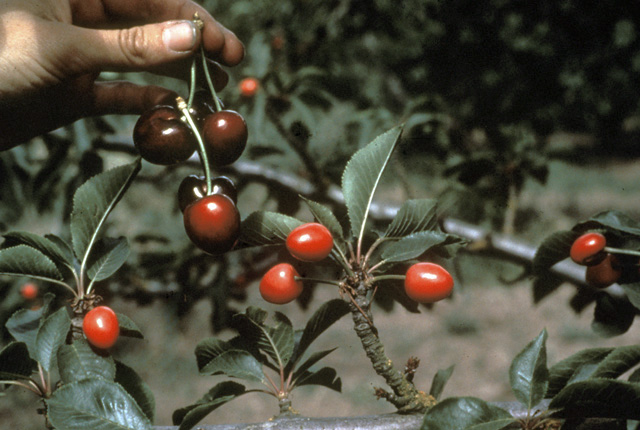
X-disease (Western X) or buckskin | Cherry
DISEASE: X-disease (Western X) or buckskin
HOST: Cherry (Prunus avium)
PATHOGEN: 'Candidatus Phytoplasma pruni'
PATHOGEN SYNONYM: Phytoplasma X-disease group
SOURCE: A. Purcell, M. Davis
DISEASE: X-disease (Western X) or buckskin
HOST: Cherry
Healthy cherry shoot (left) and stunted shoot (right).
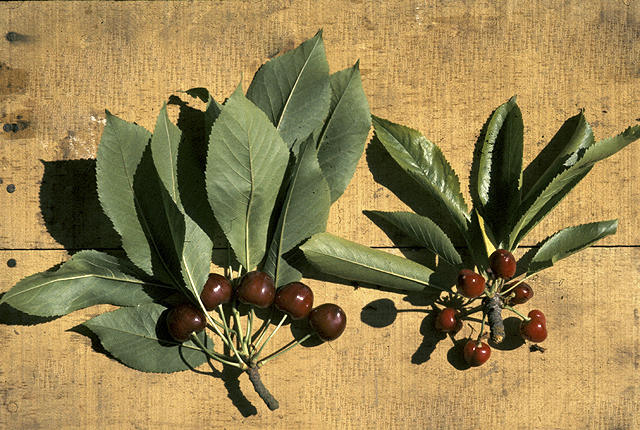
X-disease (Western X) or buckskin | Cherry
DISEASE: X-disease (Western X) or buckskin
HOST: Cherry (Prunus avium)
PATHOGEN: 'Candidatus Phytoplasma pruni'
PATHOGEN SYNONYM: Phytoplasma X-disease group
SOURCE: S. Thomson
DISEASE: X-disease (Western X) or buckskin
HOST: Cherry
Infected trees on 'Mazzard' rootstock (right) may live for years, producing fruit with symptoms. Trees on 'Mahaleb' rootstock (left) usually die rapidly in year of infection, about time of fruit ripening.
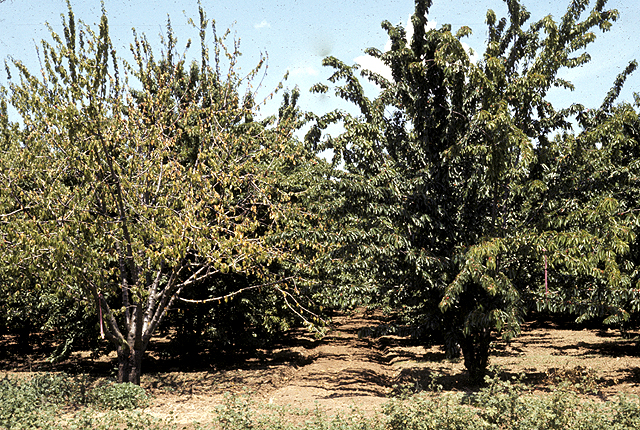
X-disease (Western X) or buckskin | Cherry
DISEASE: X-disease (Western X) or buckskin
HOST: Cherry (Prunus avium)
PATHOGEN: 'Candidatus Phytoplasma pruni'
PATHOGEN SYNONYM: Phytoplasma X-disease group
SOURCE: S. Thomson


